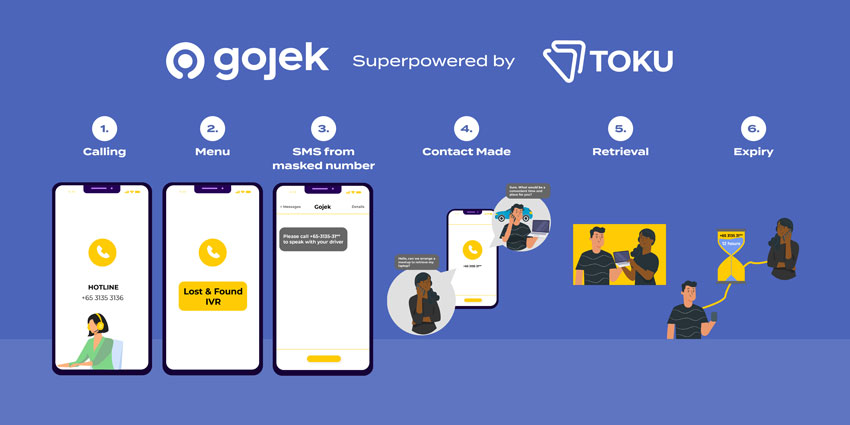In today’s climate, as consumers expect personalised customer journeys, allowing them to interact with brands through the channels of their choice – it’s becoming harder for brands to get by without the help of communication APIs.
Simply put, a communication API allows adding more communications channels to a mobile app or web platform with the help of a third party. For example, if your delivery app has a built-in voice capability, but you want to allow users to contact you via SMS as well – a communication API can do that for you.
“Initially, businesses had a pretty transactional approach towards communication APIs, aiming to either reduce costs or generate revenue,” explains Thomas Laboulle, CEO of Toku, a leading cloud communications provider for the APAC region.
“But over the past years, companies started approaching communication APIs from a CX perspective. Studies have shown that consumers are quickly reaching out to different communications channels since they’re not willing to wait long for answers anymore. This means that brands that don’t interact with users across multiple channels are at risk of losing customers.”
Communication APIs, allowing live information exchanges across different channels and databases, make it possible for brands to tackle that challenge.
Improved and More Secure Communication in the Sharing Economy
Ideal candidates for using communication APIs are apps connecting offer and demand for different services, like transportation and delivery apps.
“Initially, the Service Provider and the customer could directly liaise with each other during a transaction, as the information was openly shared via the mobile service,” says Laboulle. “But that caused a lot of issues in terms of personal data protection, forcing service providers to search for alternative solutions.”
This is where communication APIs come into the picture.
Gojek, one of Toku’s customers in the Southeast Asia ride-hailing market, used Toku APIs to help drivers and passengers communicate easily and securely in order to help retrieve lost items.
“Gojek had realised that having a customer support agent intermediating between the driver and the passenger to coordinate the retrieval of lost items was redundant, since the only added value there was to protect the contact details of the different parties. To optimise the process, they decided to use Toku’s communication APIs to automate the resolution of lost and found use cases”
How does this actually work?
A dedicated hotline is provided by Toku, which through an API can also be made available from within the app. But since the lost item is often the phone itself – users and drivers can call that number from any phone. The hotline then leads to an automated IVR that will either recognise the caller ID (based on any recent transactions listed in the Gojek database) or have the caller enter the relevant transaction number through their dial pad.
“The transaction number will then be used by our respective databases to associate it with the right driver or the right passenger. Once the recognition is completed, both parties are immediately connected with each other through the IVR,” explains Laboulle. Wait, there’s more:
After the conversation has ended, both parties will receive an SMS with a phone number that has been allocated to their lost and found ticket. And for the next 12 hours, every time they call that number they will automatically be redirected to the other party.
This comprehensive flow was achieved by a combination of Toku’s programmable Voice and SMS APIs with its connectivity and access services in APAC.
What more can a passenger who lost their precious belongings possibly ask for?
Communication APIs Equal Happier Customers
According to Laboulle, the adoption of communication APIs for CX purposes will only increase in the upcoming future, as more and more B2C brands begin to internalise the significance of sharing information across different channels.
“The low hanging fruits are the phone numbers and email addresses used as identifiers. But very quickly, we see that other IDs, like social media handles, are also becoming relevant,” says Laboulle.
“This will allow more complex customer journeys, relying not only on user preferences recorded in the CRM, but also on other parameters like the nature of the interaction or the location of the user”
As the need for seamless customer experience regardless of channel is increasing, Communication APIs can be a great solution for companies wanting their apps to offer omni-channel communications capabilities to their customers.
from UC Today https://ift.tt/3a7M1Cq





0 Comments